I have a simple hexagonal grid, where I'm selecting a group of hexagons, which will then be filled with some random points.
Let me explain the exact procedure of generating the points:
- Using a list of hex coordinates I'm selecting hexagons.
- Group hexagons into areas.
- Store all edge points, for each area individually.
- Loop through areas:
- Calculate area boundary ( required for definig the range for random point generator )
- Draw area (bounding) square. (to see whether the computation was correct)
- Based on the bounding square min,max values generate random points
- Test if point is inside the area shape. (The shape is defined by area edge points)
- If the point passed the above test, it's the pushed into an array.
- loop through the array of points and draw them on screen.
Now I tried these two methods to determine whether a point lies inside a specific shape.
cn_PnPoly: function( P, V, n ){ ///// Point , array of vertices , array size ////
var cn = 0, vt = 0.0;
for (var i=0; i< (n-1); i++) { // edge from V[i] to V[i+1]
if (((V[i].y <= P.y) && (V[i+1].y > P.y)) // an upward crossing
|| ((V[i].y > P.y) && (V[i+1].y <= P.y))) { // a downward crossing
// compute the actual edge-ray intersect x-coordinate
vt = (P.y - V[i].y) / (V[i+1].y - V[i].y);
if (P.x < V[i].x + vt * (V[i+1].x - V[i].x)) // P.x < intersect
++cn; // a valid crossing of y=P.y right of P.x
}
}
return (cn&1); // 0 if even (out), and 1 if odd (in)
},
result:
isInHexBounary: function( p, points, l ){ ///// Point , array of vertices , array size ////
var result = false;
for (i = 0, j = l - 1; i < l; j = i++) {
if ((points[i].y > p.y) != (points[j].y > p.y) && (p.x < (points[j].x - points[i].x) * (p.y - points[i].y) / (points[j].y-points[i].y) + points[i].x)) {
result = !result;
}
}
return result;
},
result:
I suppose the first method requires to have all the points in specific order, and that's why it's not working properly. But the second one seems to be working almost correct , apart from some parts. Any idea what I'm doing wrong?
Update:
It's turning out that for mos tof the algorhytms it's required to have the points in a specific order, so I calculated angle of each point relative to the average center point. And then sorted all the points by angle. Both algorithms now return similar results. Although there is sitll some points leaking through the area shape.
findCenter: function( points ){
var x = 0, y = 0, i, len = points.length;
for (i = 0; i < len; i++) {
x += points[i].x;
y += points[i].y;
}
return {x: x / len, y: y / len};
},
findAngles: function(c, points){
var i, len = points.length, p, dx, dy;
for (i = 0; i < len; i++) {
p = points[i];
dx = p.x - c.x;
dy = p.y - c.y;
p.angle = Math.atan2(dy, dx);
}
},
sortByAngle: function( points ){
points.sort(function(a, b) {
if (a.angle > b.angle) return 1;
else if (a.angle < b.angle) return -1;
return 0;
});
},
result:



